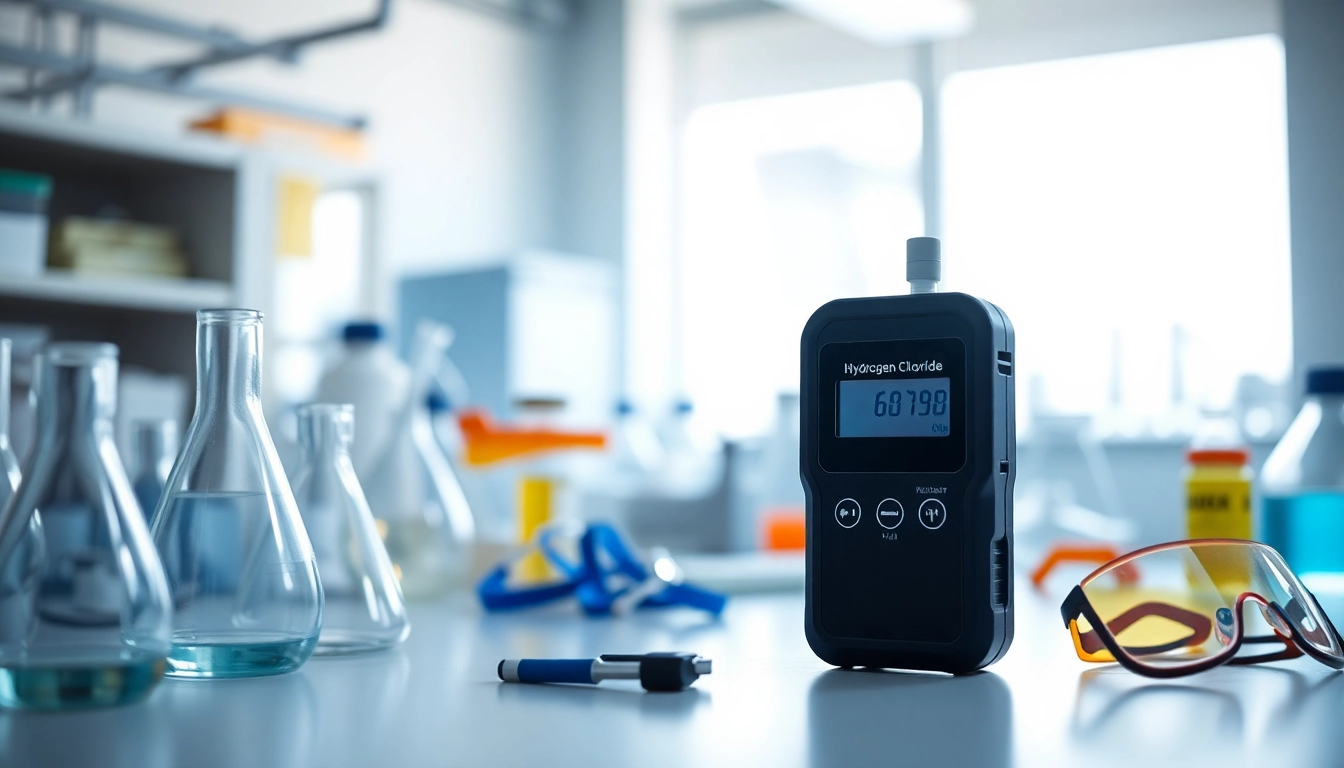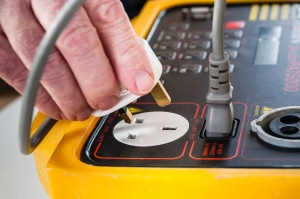Understanding the Importance of Hydrogen Chloride Detectors in Industrial Safety
1. Introduction to Hydrogen Chloride Detectors
Hydrogen Chloride (HCl) is a colorless gas with a pungent odor that poses significant health risks in industrial environments. As an essential component in various chemical processes, it is crucial to monitor its presence to ensure safety and compliance with health regulations. That’s where a Hydrogen Chloride detector comes into play. This article delves into the role these detectors play in safeguarding workplaces, their technology, applications across different sectors, and the future of HCl detection.
1.1 What is Hydrogen Chloride and Its Risks?
Hydrogen Chloride is a highly corrosive, toxic gas that can cause severe health issues upon exposure. It can irritate the eyes, skin, and respiratory tract. At high concentrations, it can lead to long-term respiratory damage and even be fatal. Because of these risks, HCl’s presence in the workplace must be monitored closely, necessitating the use of specialized detection equipment.
1.2 Key Features of Hydrogen Chloride Detectors
Effective Hydrogen Chloride detectors have several key features. These include sensitivity to low concentrations of HCl, quick response times, and robust build quality to withstand harsh industrial environments. Many modern detectors also offer real-time monitoring capabilities and IoT integration, allowing for remote data access and alerts. These features are vital, not only for compliance with safety regulations but also for protecting the health of workers.
1.3 Importance in Various Industries
Hydrogen Chloride detectors are essential in a range of industries, particularly those involving chemical manufacturing, petroleum refining, and waste treatment. They play a critical role in maintaining safety standards and fostering a culture of safety within these environments. In chemical manufacturing, for instance, monitoring HCl is vital during synthesis processes, while in petrochemicals, they are crucial for detecting leaks that could endanger the workforce and surrounding communities.
2. How Hydrogen Chloride Detectors Work
2.1 Sensor Technology Explained
Hydrogen Chloride detectors harness various sensor technologies to detect the presence and concentration of HCl in the air. One of the most common technologies is the electrochemical sensor, which reacts with HCl to produce a measurable electric signal. Other types include infrared sensors and metal oxide semiconductors, each offering unique advantages such as durability or enhanced sensitivity. Understanding these technologies helps determine the right choice for specific applications.
2.2 Calibration and Maintenance Best Practices
Regular calibration and maintenance of Hydrogen Chloride detectors are crucial to ensure accurate readings. Most manufacturers recommend calibrating detectors at least once a month or after significant exposure to HCl. Maintenance practices should include regular inspection for damage, battery checks, and cleaning the sensor components. Following these guidelines helps minimize false positives and enhances the reliability of the safety measures.
2.3 Common Detection Methods
There are several detection methods employed for Hydrogen Chloride, each suitable for different applications. These methods include:
- Continuous Monitoring: Ideal for environments with constant potential exposure. Provides real-time data to ensure immediate action can be taken if HCl levels rise.
- Portable Detectors: Designed for field investigations, these allow for on-the-spot measurement during incident response.
- Fixed-point Detectors: Installed in high-risk areas for 24/7 monitoring, triggering alarms when pre-set thresholds are exceeded.
These methods create a comprehensive approach to HCl detection, allowing for effective safety management in diverse environments.
3. Applications of Hydrogen Chloride Detectors
3.1 Use in Petrochemical Industries
In the petrochemical industry, Hydrogen Chloride is commonly produced during the refining of crude oil and petrochemical synthesis. Detectors in this sector are pivotal for preventing leaks that could endanger workers and the environment. For example, during processes involving the alkylation of hydrocarbons, HCl is a by-product, and monitoring its concentration helps to avert potentially catastrophic incidents, ensuring compliance with safety standards and regulations.
3.2 Role in Environmental Monitoring
Environmental monitoring is another critical application of Hydrogen Chloride detectors. These devices help track HCl emissions from industrial sites and ensure compliance with environmental regulations. For instance, in waste incineration plants, HCl can be released during the combustion of chlorine-containing compounds. Monitoring emissions helps organizations reduce their ecological footprint and avoid legal repercussions related to air quality standards.
3.3 Integration in Safety Protocols
Integrating Hydrogen Chloride detectors into company safety protocols enhances overall workplace safety. Many organizations establish emergency response plans that incorporate HCl monitoring as a critical safety measure. Training employees to understand detector readings, respond to alarms, and execute evacuation plans significantly minimizes the risk of exposure. Additionally, regular audits of safety measures linked with HCl detection can lead to continuous improvement in workplace safety.
4. Selecting the Right Hydrogen Chloride Detector
4.1 Factors to Consider When Choosing
Choosing the right Hydrogen Chloride detector involves several essential considerations:
- Sensitivity: Determine the detector’s minimum detection limit based on the industry’s regulatory requirements.
- Response Time: Look for devices with a quick response time to enhance safety.
- Calibration Needs: Consider how often the detector requires calibration and how user-friendly the process is.
- Durability: Assess the build quality and how well it can withstand harsh conditions.
These factors help ensure that the selected detector meets the unique needs of the environment in which it will be used.
4.2 Comparing Popular Models
There are numerous Hydrogen Chloride detectors on the market, each with its advantages and specifications. Models from leading manufacturers like Dräger, Honeywell, and MSA offer varied features such as ruggedness for field use, battery life, and data logging. When comparing models, it is beneficial to analyze user reviews and performance metrics, ensuring you select a detector that aligns with operational needs and budgets.
4.3 Budgeting for Detection Solutions
Budgeting for Hydrogen Chloride detection solutions can vary greatly depending on the technology and features required. Basic portable detectors may range from a few hundred to several thousand dollars, while comprehensive fixed-point systems can incur higher initial investments. It’s also critical to factor in ongoing costs such as maintenance, calibration, and potential software upgrades when planning your budget.
5. Future Trends and Innovations
5.1 Advances in Detection Technologies
The landscape of Hydrogen Chloride detection technologies is evolving rapidly. Innovations like advanced sensor technologies, miniaturization of devices for portability, and integration with smart technologies such as IoT platforms are becoming more commonplace. These developments not only enhance the accuracy and reliability of detection but also facilitate better data analytics for preventative maintenance and improved safety protocols.
5.2 Regulatory Changes Influencing Design
Regulatory bodies continuously update their guidelines on workplace safety and environmental emissions. As stricter regulations are put in place to control hazardous substances, including Hydrogen Chloride, manufacturers are compelled to innovate and enhance their detection technologies. Adapting to these regulations ensures compliance and mitigates the risks associated with HCl exposure in various industries.
5.3 The Role of AI in Future Detectors
Artificial Intelligence (AI) is set to revolutionize hydrogen chloride detection in the near future. By implementing machine learning algorithms, detectors will be capable of analyzing historical data to predict potential leaks and equipment failures proactively. Furthermore, AI can optimize calibration schedules based on environmental variables, thus maximizing the efficiency of monitoring systems and reducing false alarms, which can distract from critical safety measures.











Post Comment